Incorporating Native American studies into adventure schooling happened unexpectedly as a result of Covid lockdown. This is our emersion into an incredible history unit that has never ended. I love river science, Andrew likes the fact he is not at a desk, and we both enjoy being outdoors – and not locked in our home. This endeavor was adventure schooling at its lockdown finest.
Newspapers On-line
Our local Native American studies started at newspapers.com. Andrew and I read about our area in the early 1800s and the settlers who came before us. Surprisingly, many same-named landmarks are still in existance! What a thrill to read about a road that we travel daily and of the Irish settlers who ‘axed’ it out of the wilds in 1807. Our favorite reads were those that described the Native Americans and where they lived. In order to not loose this information, we pinpointed locations on a county map and immediately began to see a pattern. Most villages and hunting sites were located along the local waterways.To see these areas for ourselves, we needed to avoid private property and people, so creek and river hiking became new Covid past-times.
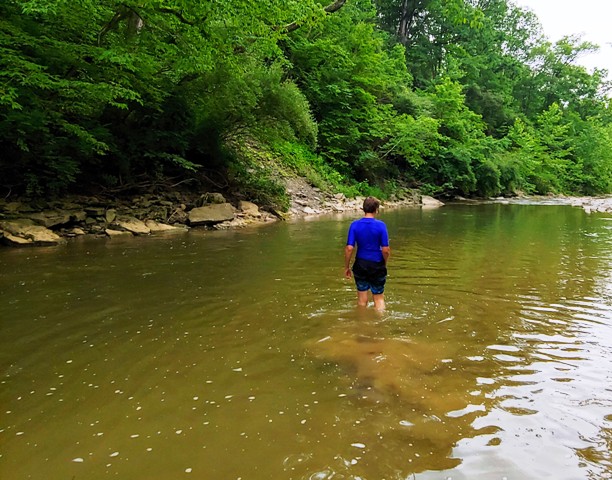
Several Notes
*On-line newspapers come with a cost. Before purchasing, check with your local library and ask if they offer their patrons on-line newspaper subscriptions. The first goal is to research what early newspapers covered your locale. Browsing papers from near-by cities is also helpful.
*River and creek safety is important! Most of the time, our rivers are shallow and Andrew and I can wade from sand bar to sand bar. I check on water levels locally, as well as up stream, and never go hiking after it rains. Our area is known for flash floods.
River Science
Understanding the basics of river science and the role that rivers played in human cultures is helpful when looking for historic sites. Rivers that forked or sat next to large field areas were perfect for transportation, trade, and daily life. To pinpoint these areas, it was necessary to make adjustments to our maps, because our information was based on 200-year old observations. I showed Andrew how to use Google maps in satelite mode in order to determine the historic flow of the river. Oxbow lakes and other geographic features make it easy to see where the river use to be. Because the river has moved over 200 years, many of the native villages that were once near the river is now in the river itself.
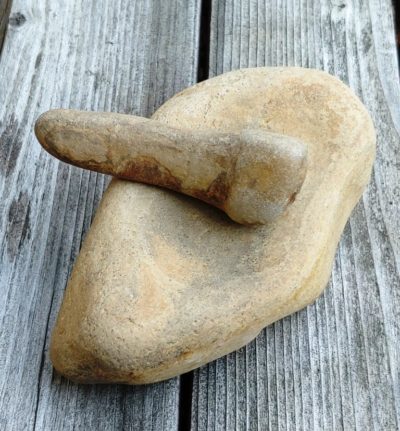
Once Andrew and I pinpoint where we think the Native Americans lived or worked, the rest is simple. Hunting for artifacts on the river is interesting because the river does the hard work. The ebb and flow of water continuously erodes and shifts the river banks with time. Exposed heavy objects (rocks) tend to remain where they fell, while sand and silt washes away. Sand bars may be sand bars today, but 200 years ago they were fields and cliffs. Villages and hunting sites have left the river edge covered with signs of past inhabitation. I love knowing that there were others using the river before me!
Stone Tools
Native Americans used more than arrowheads in their daily routines. To further your Native American studies, begin to train your eye to look for stone tools. Google ‘paleo stone tools‘ or ‘Native American tools‘ as well as other keywords. Then study and check out images that other artifact hunters have posted. Libraries also have visual encyclopedias of artifacts in their collections, and while these are helpful, they tend to show photos of museum quality pieces. Stone tools will show signs of human workmanship or use and they fit comfortably into a hand-held grip. My motto: When in doubt take it home and study it. Stone and flint tools of various shapes and sizes played an important roles in the lives of native people. Sometimes it becomes clear that a paleo group inhabitated the same spot as the woodland era people.
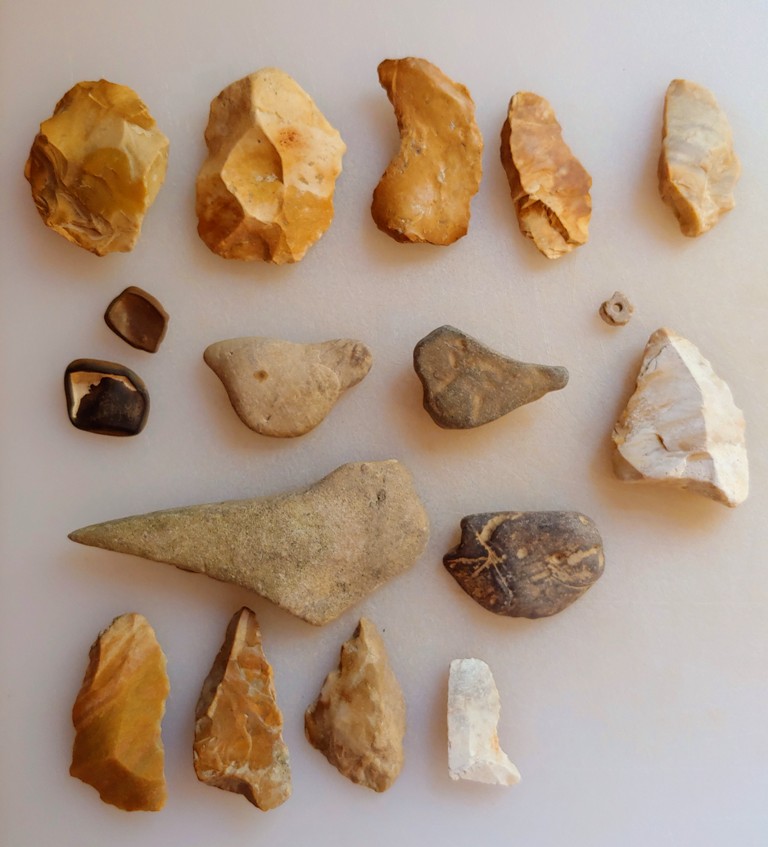
Native American Studies Gone Wild!
Andrew, who sometimes gets sidetracked, was digging for pirate treasure in the sand when he discovered this stone tool treasure. Thankfully he was savvy enough to know it was ‘a something‘! The bottom surface is perfectly flat and shows wear of sanding or scrapping in a circular motion. It easily fits into my right hand.
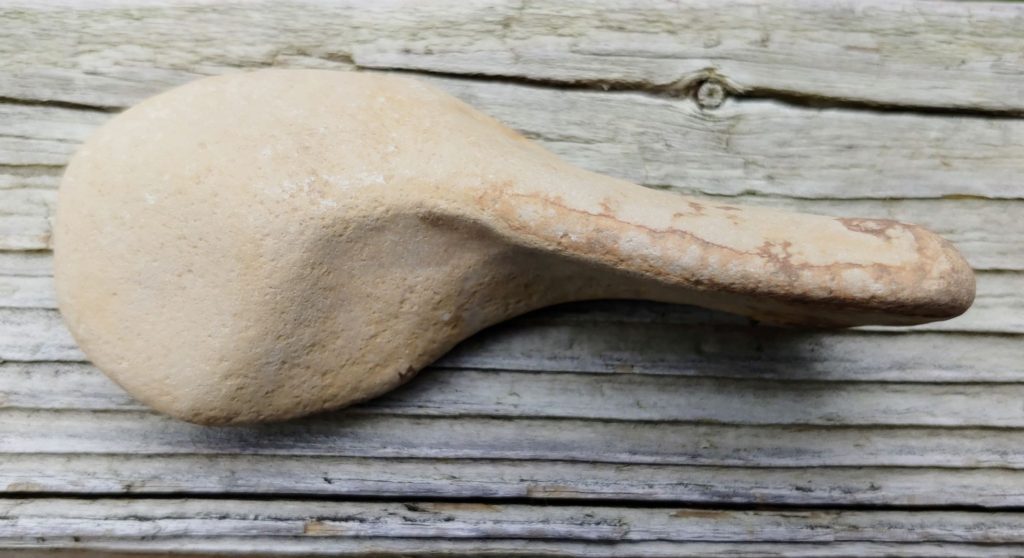
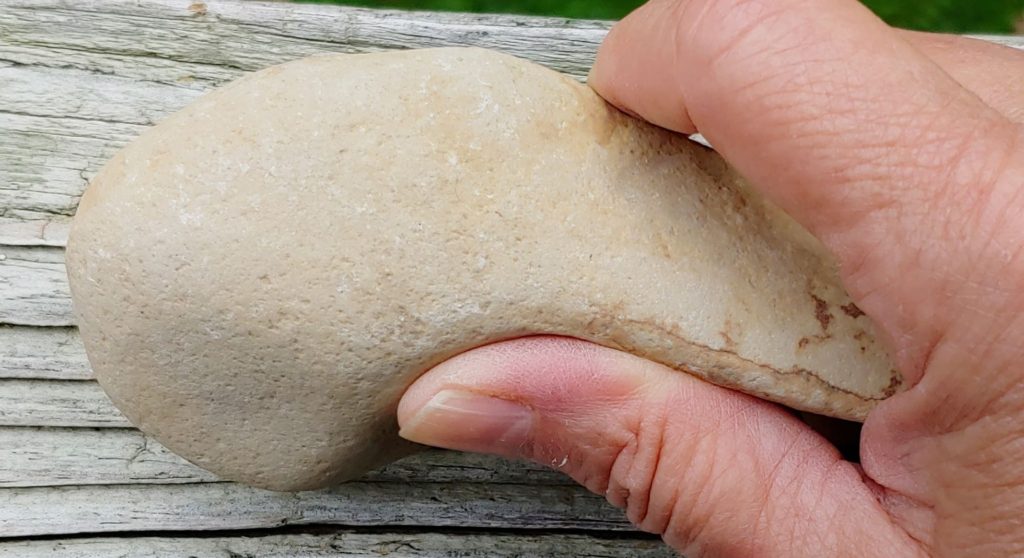
Here is a strange rock that I almost left on the sand bar but am now glad I didn’t. I felt it was a ‘something’ and suspected it might be an abrader but needed help with determination.
The craftsman used the hole and crevice to shave the beginnings of a smooth arrow shaft. The shaft would be pulled along the crevice or hole to make it straight. An archaeologist quickly pointed out the wood oil stains along the edges. How cool to picture the skilled hands that used this rock!
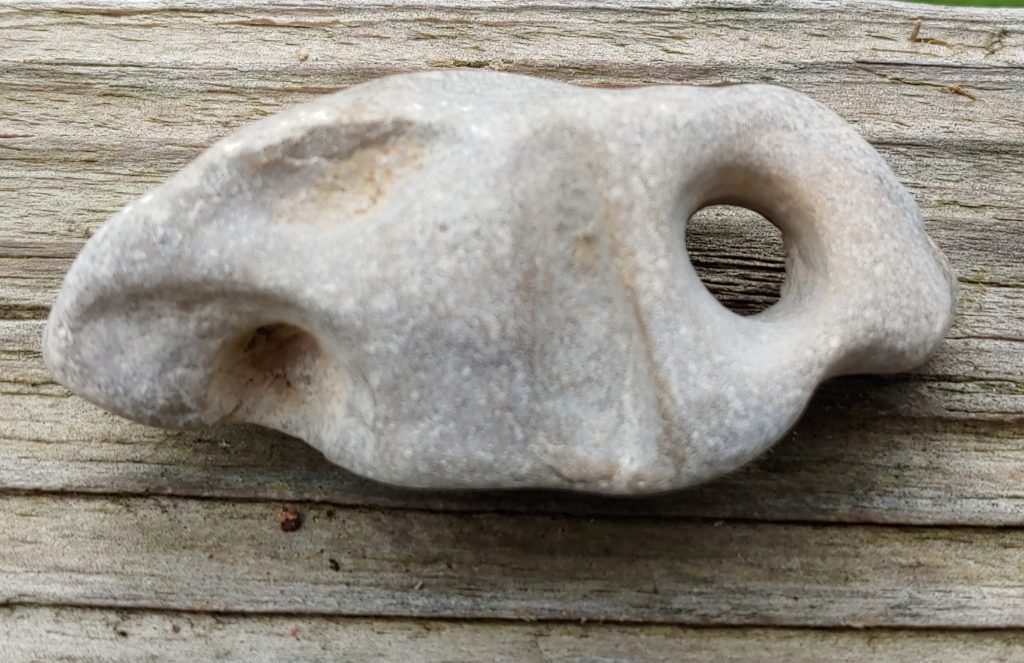
Respect the River (and Mom)
Safety is paramount when exploring rivers, because the undercurrents can catch a hiker by surprise. One afternoon, Andrew was totally miffed with me, (I can’t imagine why) and went ahead on his own. Even though I sent out a reminder about safety in numbers, I watched as he left me and pulled ahead. He forded the river in an area we were familiar with, but on this day a tree blocked his path. The water wasn’t deep, but the tree and branches created a whitewater current. This is not the kind of river science you want to personally explore!
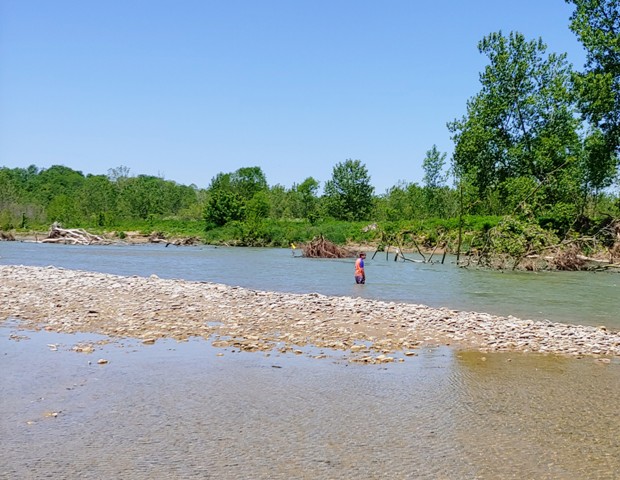
A Lesson Learned the Hard Way
As Andrew reached the area just a bit upstream from the tree, the current quickly pinned him against the trunk. A teen with normal muscle tone probably wouldn’t have had an issue. Andrew is a different story, because it doesn’t take long before low muscle tone changes to wet noodle status. By the time I reached Andrew, he was spent. If we rode the current it would have deposited us in calm waters, but Andrew’s energy level was questionable. Instead, I worked my way behind Andrew and arranged him so that we could walk side by side. The current pushed Andrew into me allowing him to relax while I took the brunt of the rushing water. Lesson learned! Andrew has never gone far ahead while we are water hiking – even on days when he doesn’t like me.
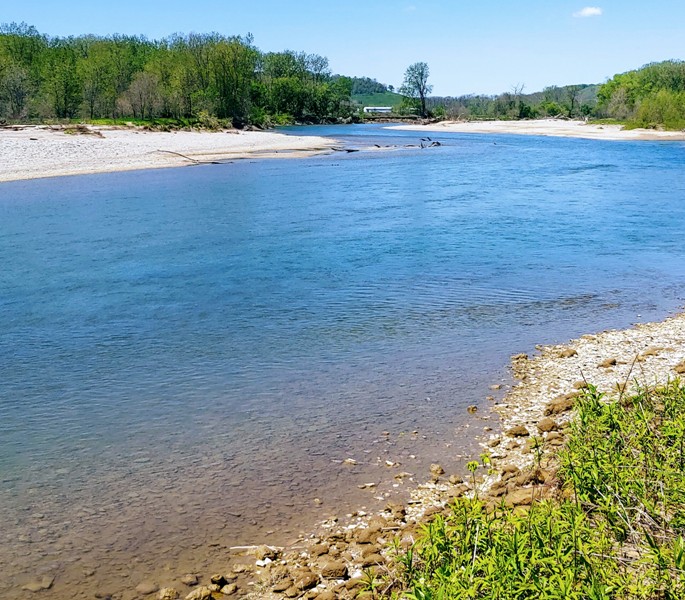
What We Learned
Incorporating Native American studies into adventure schooling turned into an incredible history unit that Andrew and I still enjoy. This particular unit included river science and safety, (including obedience!), environmental science, geology, geography, map making, on-line research practice, and PE. We also discovered that we drive by Native American sites on a daily basis. So many unmarked burial mounds and earth works remain visible yet lost to a clueless, uncaring society – and then there are the waterways that hold many secrets!
Like the sounds of this adventure schooling unit? Check out what we learned in the archaeology field:


